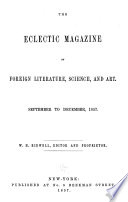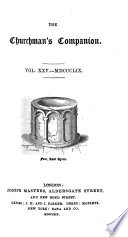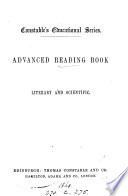 that every particle of matter in the universe attracts every other particle, with a force whose direction is that of the line joining the two, and whose magnitude is directly as the product of their masses, and inversely as the square of their distances... that every particle of matter in the universe attracts every other particle, with a force whose direction is that of the line joining the two, and whose magnitude is directly as the product of their masses, and inversely as the square of their distances...  A Popular History of Science - Page 193by Robert Routledge - 1881 - 673 pagesFull view A Popular History of Science - Page 193by Robert Routledge - 1881 - 673 pagesFull view - About this book
 | Archibald Tucker Ritchie - 1850 - 580 pages
...opinion of astronomers. Sir John F. Herschel, in referring to Newton's law of gravitation, says — " Every particle of matter in the universe attracts every other particle with a force directly proportioned to the mass of the attracting partiele, and inversely to the square of the distance... | |
 | J. D. Bell - 1850 - 486 pages
...when you see it on record. It is the theory of universal gravitation — the grand generalization, that every particle of matter in the universe, attracts every other particle of matter with a force or power directly proportioned to the quantity of matter in each, and decreasing... | |
 | John Frederick William Herschel - 1851 - 744 pages
...instance, and provisionally, his law of universal gravitation, which may be thus abstractly stated : — " Every particle of matter in the universe attracts every other particle, with a force directly proportioned to the mass of the attracting particle, and inversely to the square of the distance... | |
 | Robert Grant - 1852 - 686 pages
...future advancement in the study of Celestial Mechanics. Already the sublime truth announced by Newton, that every particle of matter in the universe attracts every other particle with a force varying reciprocally as the squares of their mutual distances, has been realised in tbe motions of... | |
 | Ohio state medical society - 1853 - 338 pages
...leave the labors of a few computations to a friend. When they were completed, the law which proved, that "every particle of matter in the universe, attracts every other particle of matter, with a force or power, directly proportioned to the quantity of matter. in each, and decreasing... | |
 | 1855 - 864 pages
...Apple to his feet and established the memorable, universal Law ; namely, that, every individual partick of matter in the universe attracts every other particle, with a. force, directly as the mass of the attracting particle, and inversely as the squares of their distances. And... | |
 | 1856 - 248 pages
...What, then, is the final conclusion of this magnificent theory ? The conclusion is, that every particle in the universe attracts every other particle with a force which is directly proportionate to the mass of the attracting particles, and inversely proportionate to the... | |
 | 1857 - 592 pages
...velocity of projection, and that the magnitude and form of the orbit is calculable. He who announced that every particle of matter in the universe attracts every other particle, with a force varying inversely as the square of the distance, and directly as the mass, ivas not ignorant of, or... | |
 | 1859 - 984 pages
...which counteracts the centrifugal force of bodies in motion. Stated abstractedly, that law is this : " Every particle of matter in the universe attracts every other particle, with a force di;ly proportioned to the mass of the attracting particle, .- inversely to the square of the distance... | |
 | Advanced reading book - 1860 - 458 pages
...mechanical forces. 1. Universal gravitation. — The principle known as universal gravitation is this, that every particle of matter in the universe attracts every other particle with a force which varies inversely as the square of the distance, ie, when the distance is doubled, the force is reduced... | |
| |